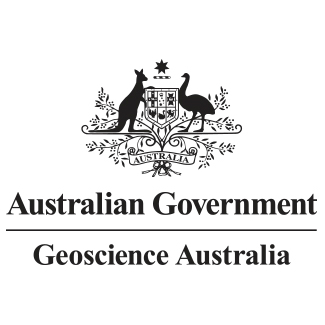Brief description
This resource includes bathymetry data acquired during the Southern Depths of the Great Barrier Reef survey using Kongsberg EM302 and EM710 multibeam sonar systems. The Southern Great Barrier Reef Shelf Bathymetry survey (FK201122/GA4867); also known as Ice Age Geology of the Great Barrier Reef survey; was led by Queensland University of Technology aboard the Schmidt Ocean Institute's research vessel Falkor from the 22nd of November to the 21st of December 2020. The primary objective of the expedition was to explore ancient undersea features that formed during the last Ice Age, when sea level was around 125 m lower than it is today. While once an exposed part of the Australian coast, these shelf areas were submerged as Earth’s glaciers and ice sheets melted and sea level rose, flooding Australia’s continental shelf. Another objective was to find the southern extent of an older limestone platform that may represent the approximately 20 million-year-old base upon which the present Great Barrier Reef has grown. This V1 dataset contains seven 2 to 64m resolution 32-bit floating point geotiff files of the Southern Great Barrier Reef Shelf Bathymetry survey area, derived from the processed EM302 and EM710 bathymetry data, using CARIS HIPS and SIPS software. This dataset is not to be used for navigational purposes. This dataset is published with the permission of the CEO, Geoscience Australia.Lineage
Maintenance and Update Frequency: asNeeded
Statement:
The Chief scientist onboard was Mardi McNeil.
This dataset was produced using CARIS HIPS/SIPS version 11.3.7
For any metadata questions, please download the Metadata.txt file located with the dataset.
Processing methodology:
Following the CARIS HIPS/SIPS workflow,
1. A vessel configuration file was created where the co-ordinates of the motion sensor, DGPS antenna and patch test offsets were recorded.
2. A new project was created and the vessel configuration file attached to the project file.
3. The raw swath sonar data files, in raw.all format, for each line was imported into the project and the vessel information assigned to the data.
EGM2008 is our first preference and when not available or possible to do so, a tidal zone data is the next preference to be applied to the data
4. The motion sensor, DGPS and heading data were cleaned using a filter that averaged adjacent data to remove artefacts.
5. Sound velocity profiles data for each block of data were attached to the corresponding raw swath sonar data files.
6. A new blank surface area was defined that specified the geographic area of study and the co-ordinate system used.
7. The data was cleaned by applying several filters that removed any spikes in the data using user defined threshold values.
8. Data were inspected visually for each line where artifacts and noisy data had not removed by the filtering process.
9. Remaining spikes were removed manually using the swath and subset editor modules.
10. All the data, i.e. bathymetric sounding and ancillary data, were merged to produce the final processed data file.
11. A weighted grid of the processed data was then created.
12. Independent velocity corrections were performed where velocity artefacts were observed.
13. The final processed grid was exported as a 32 bit floating point Geotif format at 2, 4, 8, 11, 16, 24 and 64m resolution referenced to egm2008 ~ to mean sea level.
The Chief scientist onboard was Mardi McNeil.
This dataset was produced using CARIS HIPS/SIPS version 11.3.7
For any metadata questions, please download the Metadata.txt file located with the dataset.
Processing methodology:
Following the CARIS HIPS/SIPS workflow,
1. A vessel configuration file was created where the co-ordinates of the motion sensor, DGPS antenna and patch test offsets were recorded.
2. A new project was created and the vessel configuration file attached to the project file.
3. The raw swath sonar data files, in raw.all format, for each line was imported into the project and the vessel information assigned to the data.
EGM2008 is our first preference and when not available or possible to do so, a tidal zone data is the next preference to be applied to the data
4. The motion sensor, DGPS and heading data were cleaned using a filter that averaged adjacent data to remove artefacts.
5. Sound velocity profiles data for each block of data were attached to the corresponding raw swath sonar data files.
6. A new blank surface area was defined that specified the geographic area of study and the co-ordinate system used.
7. The data was cleaned by applying several filters that removed any spikes in the data using user defined threshold values.
8. Data were inspected visually for each line where artifacts and noisy data had not removed by the filtering process.
9. Remaining spikes were removed manually using the swath and subset editor modules.
10. All the data, i.e. bathymetric sounding and ancillary data, were merged to produce the final processed data file.
11. A weighted grid of the processed data was then created.
12. Independent velocity corrections were performed where velocity artefacts were observed.
13. The final processed grid was exported as a 32 bit floating point Geotif format at 2, 4, 8, 11, 16, 24 and 64m resolution referenced to egm2008 ~ to mean sea level.
Notes
PurposeMake the bathymetry data available to the public
Issued: 22 09 2020
Data time period: 2020-11-22 to 2020-12-21
text: westlimit=151.30; southlimit=-26.50; eastlimit=154.20; northlimit=-21.50; projection=WGS 84 / UTM zone 56S (EPSG:32756)
Subjects
AusSeabed |
Bathymetric grids |
Bathymetry |
EARTH SCIENCES |
HVC_144641 |
Marine |
Marine Data |
Multibeam |
Published_Internal |
geoscientificInformation |
User Contributed Tags
Login to tag this record with meaningful keywords to make it easier to discover
Other Information
Southern Great Barrier Reef Shelf Bathymetry 2m - 64m 2020 (zip) [2 GB]
Link to voyage report
Identifiers
- DOI : 10.26186/145133

- URI : pid.geoscience.gov.au/dataset/ga/145133

- global : f4f26ed2-6a92-4198-aed6-53c53f40185b


